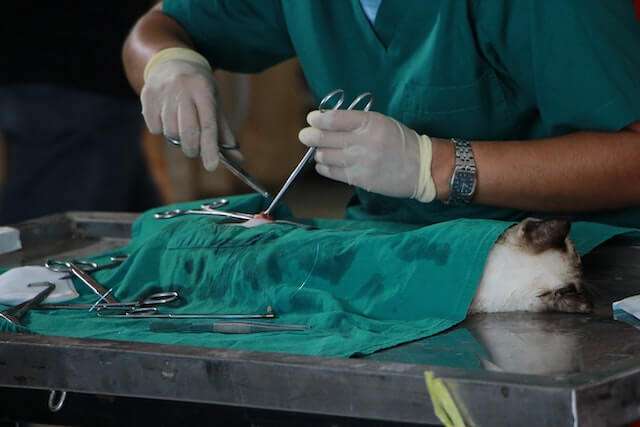lymph node cancer in dogs is one of the health challenges faced by dogs. As dog owners, we cherish the unbreakable bond we share with our furry companions. However, just like humans, dogs have the possibility of lymph node cancer. This article aims to shed light on this concerning condition, providing valuable insights, potential treatment options, and practical tips to support our four-legged friends. Join us on this journey as we delve into the world of lymph node cancer in dogs.
how to Understanding Lymph Node Cancer in Dogs
What is Lymph Node cancer in Dogs Body?
Lymph nodes are small, bean-shaped structures found throughout a dog’s body, forming part of their immune system. These nodes play a crucial role in filtering lymph fluid, which carries waste materials, toxins, and harmful substances away from tissues and organs. By trapping and destroying harmful agents, lymph nodes act as guardians, defending the body against infections and diseases.
Lymph Node Cancer in Dogs: Causes and Risk Factors
Lymph node cancer, also known as lymphoma or lymphosarcoma, is a malignant condition that occurs when abnormal cells within the lymph nodes begin to multiply uncontrollably. While the exact causes of lymph node cancer in dogs are not fully understood, certain risk factors have been identified. These include genetic predisposition, exposure to certain environmental toxins, impaired immune function, and certain viral infections.
How can I identify Lymph Node Cancer in Dogs
The early signs of lymph node cancer is crucial for timely intervention. That is why detecting it is vital for its fast treatment. Common symptoms include swollen lymph nodes, which can be felt as lumps under the skin, unexplained weight loss, loss of appetite, lethargy, coughing, difficulty breathing, and changes in behavior. It’s important to note that these symptoms can vary depending on the location and stage of the cancer, so prompt veterinary evaluation is essential for an accurate diagnosis.
The Importance of Early Detection: Diagnostic Methods and Tests
When lymph node cancer is suspected in a dog, veterinarians employ various diagnostic methods to confirm the diagnosis and determine the stage of the cancer. These methods may include physical examinations, blood tests, fine-needle aspiration, lymph node biopsy, imaging tests such as X-rays or ultrasound, and bone marrow aspiration. Early detection allows for more effective treatment planning and improves the chances of successful outcomes.
By understanding the role of lymph nodes, the causes and risk factors of lymph node cancer, recognizing its symptoms, and emphasizing the importance of early detection through diagnostic methods, dog owners can take proactive steps to ensure their furry friends receive the care they need. Remember, staying vigilant and seeking professional veterinary guidance is crucial when it comes to the well-being of our canine companions.
What are the Types of Lymph Node Cancer in Dogs
Canine Lymphoma: The Most Common Form of Lymph Node Cancer.
Canine lymphoma is the most prevalent form of lymph node cancer in dogs. It originates from the lymphocytes, a type of white blood cell found in the lymphatic system. This type of cancer can affect various parts of the body, including the lymph nodes, spleen, bone marrow, and other organs. Canine lymphoma is classified into different subtypes based on the specific type of lymphocyte involved and the location of the cancer. Prompt diagnosis and appropriate treatment options can significantly improve a dog’s prognosis and quality of life.
Other Types of Lymph Node Cancer: Mast Cell Tumors, Hemangiosarcoma, and More
In addition to canine lymphoma, there are other types of lymph node cancer that can affect dogs. One such example is mast cell tumors, which originate from mast cells and can be found in the skin, internal organs, or the lymphatic system. Hemangiosarcoma is another form of lymph node cancer that arises from the cells lining blood vessels. This aggressive cancer can affect various organs, including the spleen, liver, heart, and skin. Other less common types of lymph node cancer in dogs include histiocytic sarcoma and lymphoid leukemias. Each of these cancers has its unique characteristics and treatment approaches, highlighting the importance of accurate diagnosis and tailored treatment plans.
what are the Treatment Options for Lymph Node Cancer in Dogs
Traditional Approaches: Chemotherapy, Radiation, and Surgery
When treating lymph node cancer in your pet, veterinarians commonly utilize traditional approaches such as administering chemotherapy, conducting radiation therapy, and performing surgery. They administer anticancer drugs through oral or intravenous methods in chemotherapy to kill or slow down the growth of cancer cells. Radiation therapy involves targeting and destroying cancer cells using high-energy beams. Surgeons may remove tumors or affected lymph nodes that cause discomfort or hinder nearby organ function
Advances in Canine Oncology: Targeted Therapies and Immunotherapy
The field of canine oncology has witnessed significant advancements, leading to the development of targeted therapies and immunotherapy for treating lymph node cancer. Targeted therapies aim to specifically target and disrupt cancer cells by interfering with specific molecules or pathways involved in their growth. Immunotherapy, on the other hand, harnesses the power of the dog’s immune system to identify and destroy cancer cells. This can include treatments such as monoclonal antibodies, vaccines, or immune checkpoint inhibitors. These innovative approaches offer new hope and potential treatment options for dogs with lymph node cancer, often with fewer side effects than traditional treatments.
Palliative Care: Enhancing Quality of Life for Dogs.
In cases where a cure may not be possible or if the cancer has progressed to an advanced stage, palliative care plays a crucial role in enhancing a dog’s quality of life. Palliative care focuses on managing pain, providing comfort, and supporting overall well-being. This can involve pain medications, anti-inflammatory drugs, nutritional support, and complementary therapies such as acupuncture or physical rehabilitation. Palliative care aims to keep dogs as comfortable and happy as possible, ensuring they receive the love and care they deserve throughout their journey.
By exploring the traditional approaches of chemotherapy, radiation therapy, and surgery, as well as the advancements in targeted therapies and immunotherapy, dog owners can have a comprehensive understanding of the treatment options available for lymph node cancer in dogs. Additionally, recognizing the importance of palliative care and its role in providing comfort and improving the quality of life for dogs with advanced stages of the disease allows owners to make informed decisions and provide the best possible care for their beloved companions.
General Conclusion
Facing lymph node cancer in our beloved dogs can be overwhelming, but with knowledge and a proactive approach, we can help them fight this battle. By understanding the different types of lymph node cancer, exploring treatment options, and providing comprehensive support, we can make a difference in their lives. Remember, early detection and timely intervention can significantly improve the chances of successful outcomes. Let’s stand together and offer the unwavering love and care our canine companions deserve.





Leave a Reply